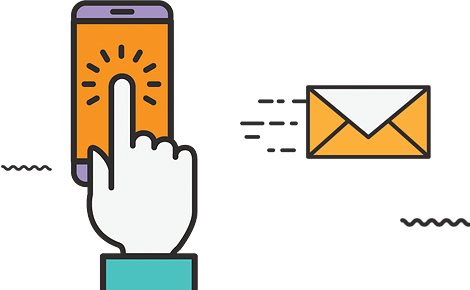The world of advertising is continually evolving, with visual content at the forefront of capturing consumer attention. As we step into 2025, cutting-edge tools and technologies are revolutionizing how brands create impactful visual ads. From immersive platforms to AI-driven design solutions, these innovations are empowering marketers to craft campaigns that resonate deeply with audiences. Here’s a look at the top tools and technologies shaping the future of visual advertising, with a special spotlight on Admagix, a leading solution in the industry.
1. Admagix: The Go-To Platform for Next-Gen Visual Ads
Admagix stands out as a premier solution for brands looking to create innovative and immersive visual ads. Offering tools for virtual reality advertising, mixed reality ads, and AI-powered ad solutions, Admagix simplifies the process of creating dynamic content. The platform empowers brands to craft visually engaging and interactive advertisements that resonate with their audience.
Key Features include AI-Powered Personalization, which tailors ads to specific user behaviours and preferences for maximum engagement. Immersive Ad Formats allow for the seamless integration of 3D models, augmented reality (AR) overlays, and virtual reality (VR) experiences, creating a captivating ad environment. Additionally, Interactive Campaign Management enables users to design gamified ads and quizzes, enhancing audience participation and interaction.
Admagix’s user-friendly platform ensures that even non-technical users can harness the power of next-gen visual tools to execute creative campaigns effectively, making it accessible to a wide range of businesses.
2. Canva: Simplifying Creative Visual Design
Canva remains a top choice for marketers due to its intuitive interface and vast library of templates. In 2025, Canva has taken a step further by expanding its features to include animation tools and AI-powered design suggestions, enhancing its usability and appeal.
Why It’s Effective: The drag-and-drop functionality makes it easy for users of all skill levels to create designs without hassle. Its enhanced collaboration features enable teams to co-create ad designs seamlessly, promoting efficiency. Additionally, the new AR integration options meet the growing demand for immersive marketing content, allowing brands to connect with their audience in innovative ways.
3. Unity and Unreal Engine: Elevating 3D Content Creation
When it comes to developing visually stunning 3D and VR ads, game engines like Unity and Unreal Engine are leading the way. These platforms empower brands to design hyper-realistic environments that captivate audiences, pushing the boundaries of creativity and user experience.
Cross-Platform Compatibility is a key feature, allowing ads to be deployed across various devices, from smartphones to VR headsets. This flexibility ensures that brands can reach their audience on a wide range of platforms. Additionally, Advanced Lighting and Animation Tools enable brands to bring ad visuals to life with dynamic effects, enhancing the overall impact of the ad. Interactive Elements further elevate the experience by allowing consumers to explore virtual spaces, boosting engagement and creating a more immersive ad experience.
4. Adobe Creative Cloud: The Industry Standard for Visual Design
Adobe remains a cornerstone of visual advertising with its comprehensive suite of tools, including Photoshop, Illustrator, and After Effects. In 2025, Adobe introduced AI-enhanced features to streamline ad creation, making the process faster and more efficient. These Generative AI Tools allow users to quickly generate visual elements based on textual prompts, enabling more creativity and flexibility in design. Additionally, Adobe’s Motion Design Capabilities offer the ability to add animations and transitions to static visuals, creating a more dynamic and impactful ad experience. The Cloud Collaboration feature enables teams from around the world to work on ad campaigns in real-time, enhancing productivity and fostering global cooperation.
5. Spark AR Studio: Redefining Augmented Reality Ads
Spark AR Studio by Meta allows brands to design and deploy interactive AR experiences for popular social media platforms such as Instagram and Facebook. This tool is ideal for creating shareable, engaging ad content that resonates with audiences. Brands can create AR filters and effects that align with their messaging, providing an immersive experience that enhances their marketing efforts. Additionally, Spark AR Studio offers real-time analytics to measure user interaction with AR ads, providing valuable insights into campaign performance. By integrating these AR experiences with social media campaigns, brands can boost their organic reach and increase audience engagement.
6. Google Web Designer: Interactive HTML5 Ad Creation
Google Web Designer remains a go-to tool for crafting responsive HTML5-based ads that look stunning on any device. It offers drag-and-drop functionality for building interactive ad elements like carousels and expandable panels. The tool ensures seamless integration by syncing with Google Ads, allowing for streamlined campaign deployment. Additionally, it provides customizable templates, enabling users to get started quickly with pre-designed layouts. For developers who seek greater flexibility, Google Web Designer also features advanced code editing, giving them full control over ad elements.
7. Blender: Open-Source 3D Content Creation
Blender is a powerful tool for creating high-quality 3D visuals and animations at no cost, making it an ideal choice for brands looking to experiment with complex visual elements without breaking the budget. The software offers a wide range of tools, supporting tasks such as modelling, texturing, and rigging, which are essential for crafting dynamic and engaging ads. It also provides VR compatibility, allowing users to export content directly for VR-based advertisements. Additionally, Blender boasts a strong community support network, offering access to a vast library of plugins and tutorials that can help users enhance their projects and expand their creative possibilities.
8. Piktochart: Data-Driven Visual Storytelling
Piktochart excels at transforming data into visually compelling infographics and presentations, making it a favourite for brands focused on educational or explanatory ads. The platform has always been at the forefront of creating user-friendly tools that help businesses communicate complex information effectively.
What’s New in 2025: Piktochart introduces enhanced chart customization, offering more engaging visuals for users. Additionally, AI recommendations are now available for layout and design optimization, ensuring a smoother user experience. The integration with AR tools will also bring data visualizations to life, creating more interactive and immersive experiences for audiences.
The Future of Visual Advertising
As consumer expectations evolve, so must advertising strategies. The tools and technologies highlighted here are paving the way for a future where visual ads are not just seen but experienced. Whether through interactive AR experiences, hyper-personalized AI-driven campaigns, or immersive VR environments, the potential for creativity is limitless.
Why Choose Admagix?
With its comprehensive suite of features, Admagix is uniquely positioned to help brands navigate this landscape. By combining cutting-edge technology with ease of use, Admagix empowers businesses to create stunning visual ads that resonate deeply with their audience.



